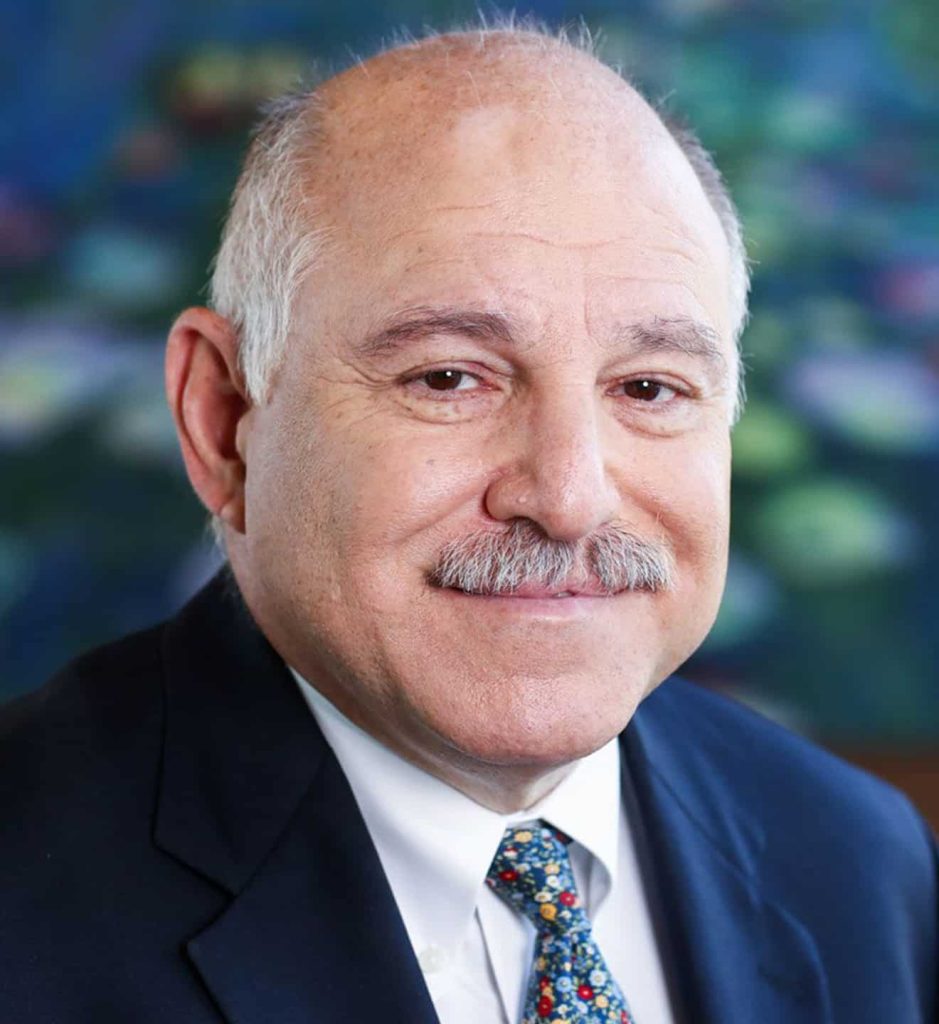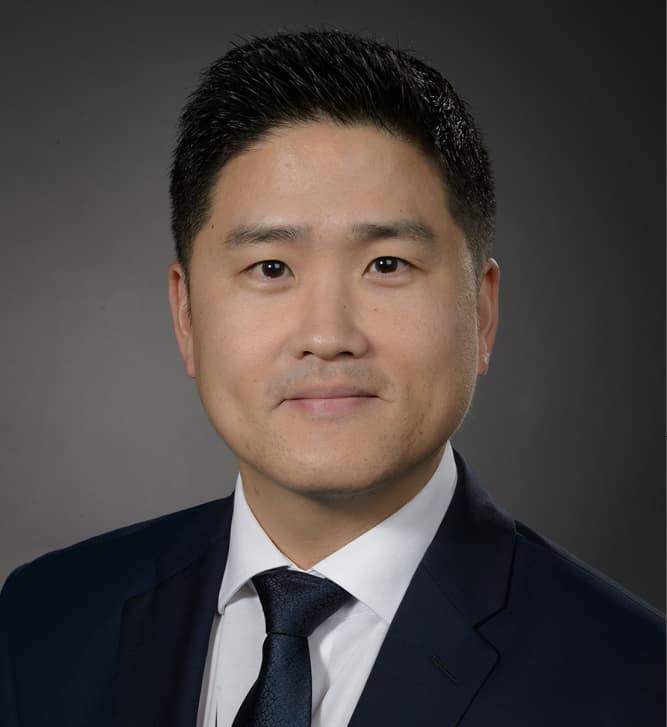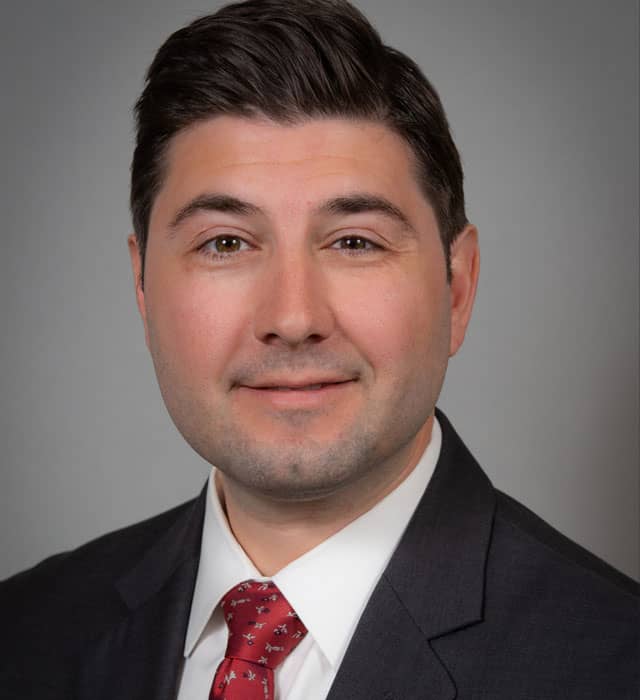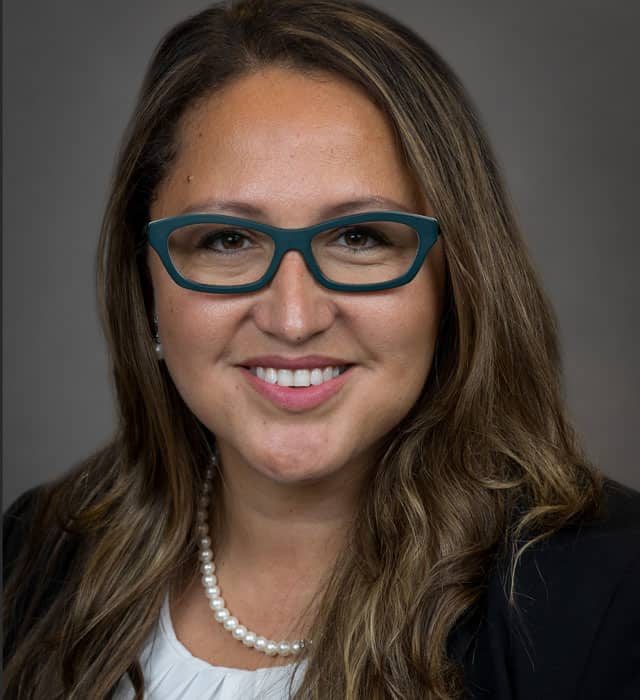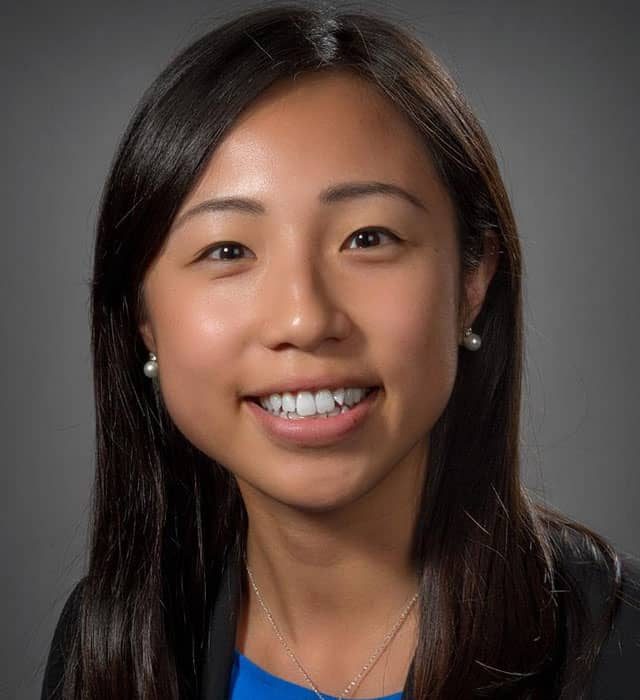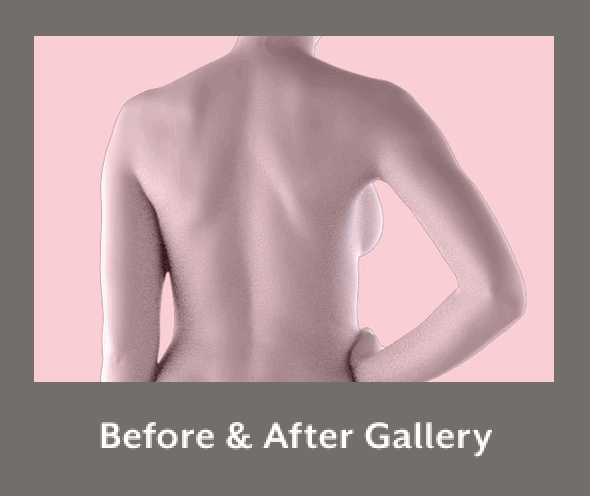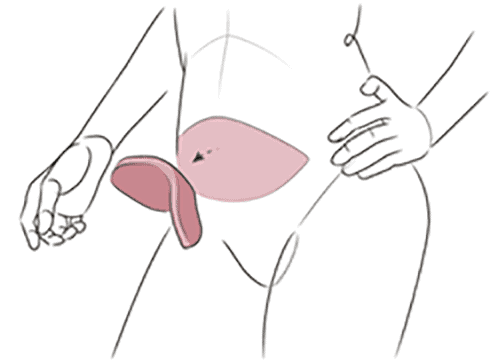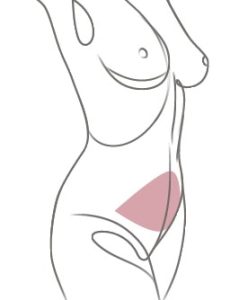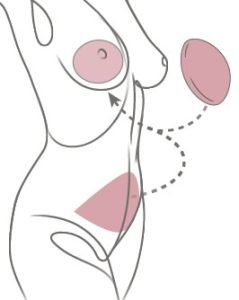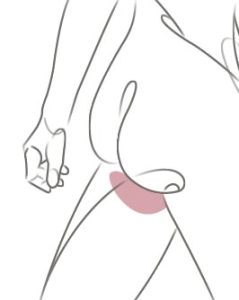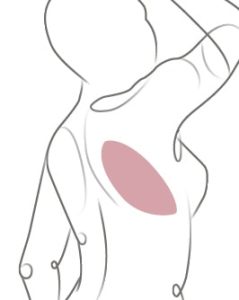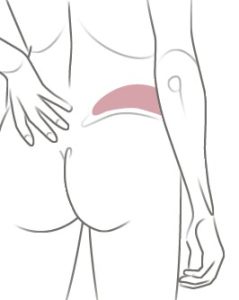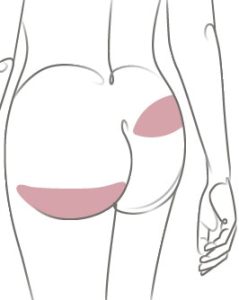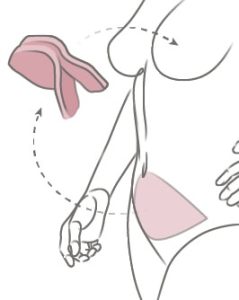About Breast Reconstruction » Hybrid Reconstruction
Hybrid Reconstruction
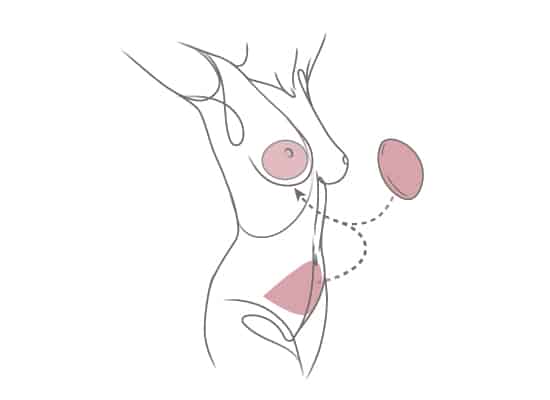
On this page

On this page
There are two main types of Hybrid breast reconstruction. Hybrid flap-implant breast reconstruction, or what we commonly refer to as HyFIL® reconstruction, combines the techniques of natural tissue (flap) reconstruction and implant reconstruction. Another Hybrid procedure know as HyPAD™ combines the use of natural tissue (flap) reconstruction and acellular dermal matrix (ADM) without the use of an implant. Both procedures enable the creation of a larger breast, even in women who don’t have enough body fat for natural tissue reconstruction alone.
Some women feel that it’s the “best of both worlds,” in that it provides thin patients with natural-looking, full breasts without requiring the multiple donor sites necessary for stacked flaps or the fat grafting procedures needed to camouflage implants. Hybrid breast reconstruction is considered flap reconstruction that is supplemented with an implant for added projection, similar to breast augmentation.
Procedure
Hybrid flap-implant reconstruction (HyFIL®)
In flap-implant reconstruction (HyFIL®), a silicone or saline (salt water) breast implant is placed above the muscle (preprectoral) and then covered with a layer of your own body fat, taken from a donor site such as the abdomen, thigh, or buttock.
Combining natural tissue with an implant allows for the creation of a bigger breast than might be possible using only your own tissue from a single donor site, especially if you’re thin or don’t have a lot of body fat. The implant is covered with natural, living fat, which makes the breast feel warmer and more natural than a breast recreated through implant reconstruction. Acellular dermal matrix (ADM), a “sling” made of collagen, is typically used in hybrid breast reconstruction to hold the implant in place.
Hybrid flap-implant reconstruction (HyFIL®) is usually started at the time of mastectomy. Often the entire procedure, which involves placing an implant and collecting a flap of tissue from a donor site on your body (abdomen, thigh, buttock, etc.) can be completed during the mastectomy.
Some patients, however, may need to have delayed (two-stage) reconstruction. Like implant-only reconstruction, a tissue expander is inserted under the breast skin during the mastectomy. The tissue expander is like a balloon that contains a port or plug. Over a period of months, the tissue expander is gradually enlarged with saline that’s injected into the port. This stretches the surrounding muscle and skin until there’s enough space for the permanent implant. The tissue expander can then be removed and replaced by the permanent implant in an outpatient procedure. Hybrid breast reconstruction can also be performed many years after mastectomy.
Hybrid flap- ADM Reconstruction (HyPAD™)
The HyPAD™ procedure uses a mix of autologous tissue transfer (using a patient’s own tissue such as the abdomen or thighs) and acellular dermal matrix (ADM), a collagen sheet often used in breast recosntruction. Combining natural tissue with ADM allows for the creation of a larger breast than may be possible with using your tissue alone, and is ideal for women who require a slight increase in volume and projection of their breast, while eliminating the need for an implant. The ADM is placed on top of your muscle in a pre-pectoral fashion, and under your flap tissue.
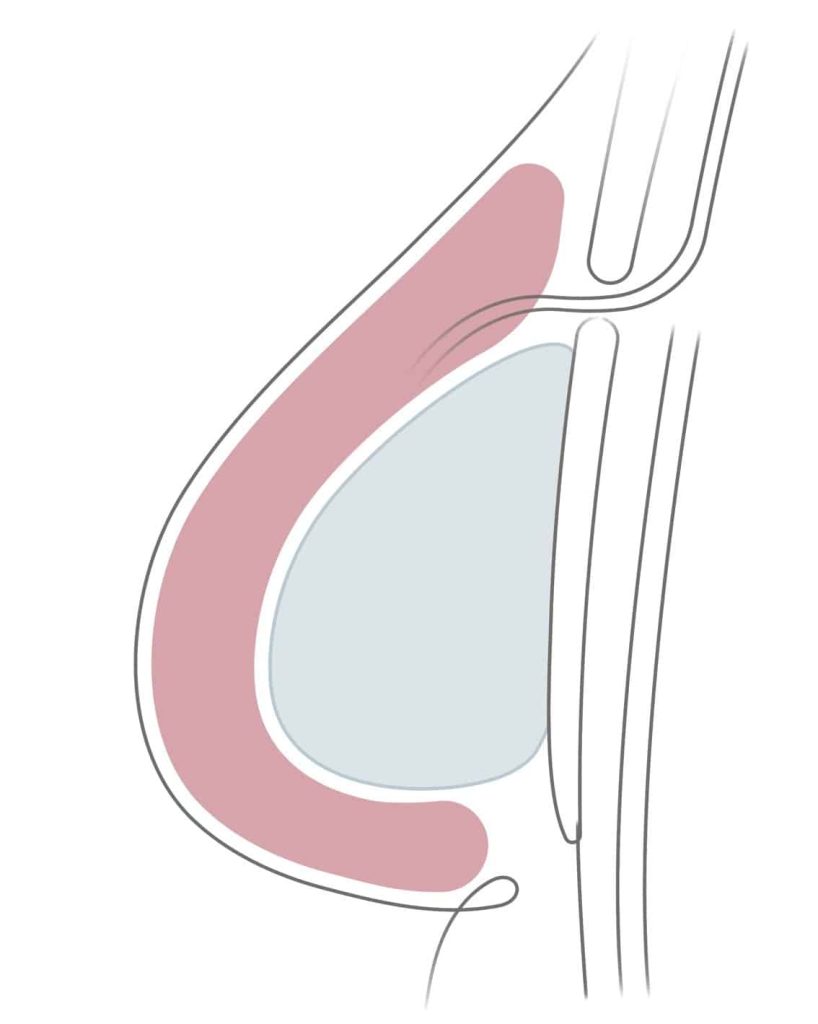
Factors that Influence Hybrid Breast Reconstruction
Radiation Treatment
Radiation changes your skin and makes it less elastic as well as decrease the volume of fat in the tissue. It also increases your chances of having scar tightening around the implant, a condition known as capsular contracture. Over time, the capsule can tighten and distort the shape of the implant. If you think you’d like hybrid reconstruction using an implant and radiation is part of your treatment, discuss your options with your surgeon.
On the other hand, if you’ve already had radiation treatment, or if the skin in the breast area has been otherwise compromised, then hybrid reconstruction may be a good choice for you. The flap that is taken from the donor site—usually the abdomen—will contain fatty tissue and also skin that can be used to replace the damaged skin in the breast area and will provide better coverage for an implant than the native breast skin alone.
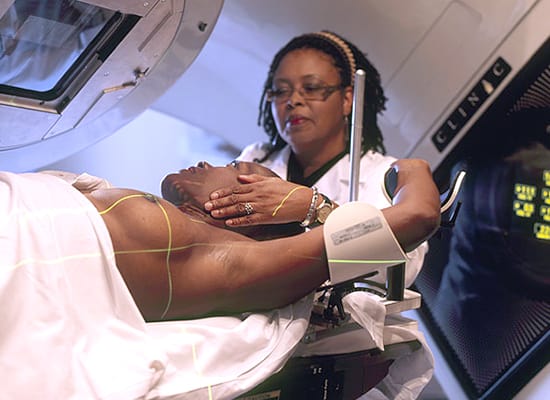
Breast Size and Shape
If you are thin but desire a larger breast and have little loose skin in the abdomen, you may be a good candidate for hybrid breast reconstruction.
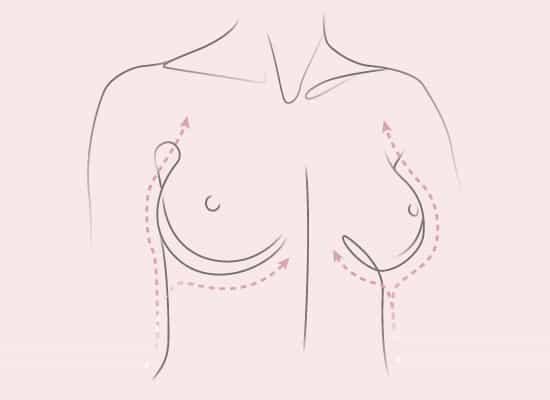
Different Types of Breast Implants for HyFIL® Reconstruction
The implant used in hybrid breast reconstruction can be either saline or silicone. Each type of implants have a distinctive look and feel.
There are many types of breast implants available. Each type of implant has a distinctive look and feel. Your plastic surgeon can help you choose the right implant based on the contour of your breast area and your unique aesthetic goals.
Here are some factors to consider when choosing a breast implant.
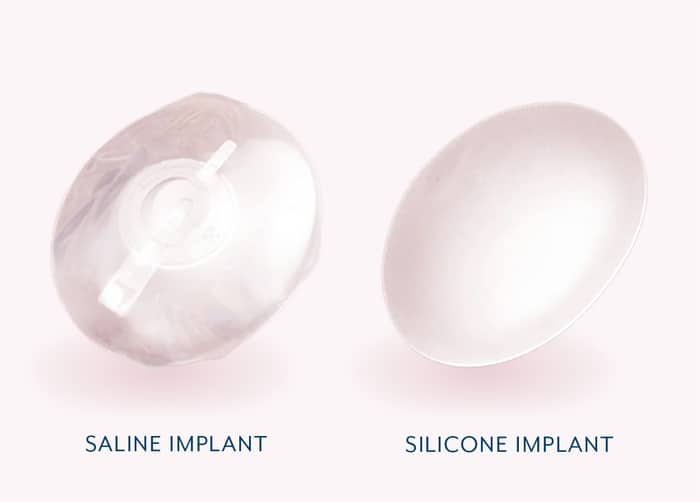
Your Recovery
Recovery Time
The recovery time for hybrid reconstruction depends on your donor site for tissue flap surgery. The most common donor procedure is the DIEP Flap procedure; the usual hospital stay for a DIEP flap procedure is 2-3 days. You’ll be able to return to most activities after 6-8 weeks, but no heavy lifting may be done for 6-12 weeks after surgery. It can take up a year for your tissue to completely heal.
Expect to Feel
Expect soreness, swelling, and bruising at all surgery sites, including the donor tissue site (abdomen, thigh, buttock, etc.). You might experience some loss of sensation, which is often temporary at the donor tissue site.
Scarring
The incision for your natural tissue procedure depends on your donor site and what kind of procedure you select. Scars typically fade over 12-18 months. Your breast scars will largely depend on the type of mastectomy you end up having.
Additional Procedures
Breast implants, whether silicone or saline, don’t last forever. Both types of implants will typically need to be replaced in 10-20 years. Implant replacement is generally an outpatient procedure.
Things to Consider
- Natural tissue flaps can camouflage minor implant irregularities that are often visible in a breast created using an implant alone.
- If the abdomen is used as the tissue donor site, the removal of excess skin and fat can give a similar result to a “tummy tuck.”
- Implants, whether saline or silicone, can rupture and therefore may need to be replaced.
- For silicone implants, ongoing MRI screening is recommended, beginning 3 years after implant placement and every 2 years thereafter to check for evidence of rupture.
- If scar tissue around the implant tightens, known as capsular contraction, you may experience pain and might need to replace or remove the implant
- Because a tissue donor site is involved, you’ll have more scars than if you had implant construction alone.
- Recovery takes longer with hybrid breast reconstruction than it does with implant reconstruction alone.
Contraindications and Alternatives
Hybrid reconstruction can be a good choice for women who are very thin. Less tissue is required from the donor site because the reconstructed breast is a combination of natural tissue and a smaller implant.
If you prefer not to have additional surgery sites, you may want to consider implant reconstruction. On the other hand, if you prefer to only use natural tissue, you will need adequate tissue at one or more donor tissue sites: abdomen, thigh, buttock, lumbar region, or upper back.




